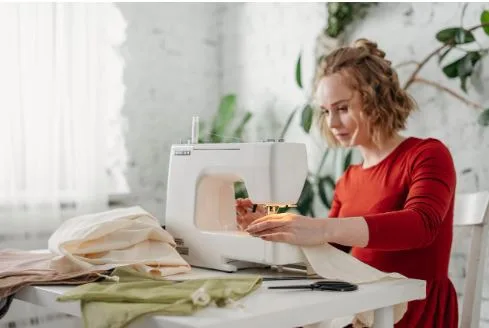How to Start Sewing as a Relaxing Hobby at Home
In a world that’s always buzzing with digital distractions and daily stress, many people are turning to traditional, hands-on hobbies to unwind. One such hobby, sewing, has been gaining popularity not only for its practicality but also for its calming, almost meditative quality. Whether you’re looking for a new creative outlet or simply want to relax and make something with your hands, sewing at home can be the perfect hobby to take up.
For step-by-step guides and beginner-friendly tutorials, websites like Ageberry are incredibly helpful.
In this post, we’ll guide you through everything you need to know to start sewing as a relaxing, enjoyable activity from the comfort of your home.
Why Sewing is a Great Hobby for Relaxation
Before jumping into how to start, it’s important to understand why sewing is so soothing for the mind and body. Here are a few reasons people turn to sewing for stress relief:
- Focus and mindfulness: Sewing requires concentration, which naturally pulls your attention away from daily stressors and into the present moment.
- Creativity boost: Designing, choosing fabrics, and putting pieces together can unleash your inner artist.
- Tangible results: Unlike many other activities, sewing produces physical, useful items, adding a sense of accomplishment.
- Repetitive motion: Hand stitching and using a machine involve rhythmic, repetitive movements that can have a calming effect, similar to knitting or crocheting.
Whether you want to make clothes, home décor, or just mend your own items, sewing offers a therapeutic combination of creativity and productivity.
Step 1: Set Your Intention
Before buying any supplies or equipment, ask yourself why you want to start sewing. Are you interested in fashion design, home décor projects, or just some quiet time away from screens? Your purpose will help guide the kind of projects you’ll start with and what tools you’ll need.
Some common goals for beginner sewists:
- Learning a new skill to relax in the evenings
- Creating handmade gifts
- Mending or repurposing old clothes
- Eventually making your own clothes or accessories
Once you have clarity on your intention, it becomes much easier to approach the next steps without feeling overwhelmed.
Step 2: Gather the Basic Supplies
You don’t need a ton of expensive tools to start sewing. In fact, you can start small and build your toolkit over time. Here are the essentials:
Basic Sewing Supplies:
- Fabric scissors: Sharp scissors specifically for fabric cutting (don’t use them for anything else!).
- Pins and pincushion: For holding fabric in place before sewing.
- Measuring tape: A flexible tape is essential for taking accurate measurements.
- Hand sewing needles: Even if you’re planning to use a machine, hand needles are useful for small fixes or finishing.
- Thread: A few basic colors (white, black, gray) to start.
- Seam ripper: Mistakes happen, this tool helps you undo stitches without damaging the fabric.
Optional (But Helpful):
- Iron and ironing board: Pressing your seams can make a big difference in the quality of your work.
- Chalk or fabric marker: For marking where to cut or sew.
- Rotary cutter and cutting mat: Great for straight-line cutting, especially in quilting or pattern work.
Step 3: Decide Between Hand Sewing and Machine Sewing
As a beginner, you have two options: sewing by hand or using a sewing machine. Each has its pros and cons.
Hand Sewing:
- Pros: Portable, inexpensive, ideal for small projects or repairs.
- Cons: Slower, less durable for heavy-duty work.
- Best for: Simple hems, small crafts, and learning the basics of stitch control.
Machine Sewing:
- Pros: Faster, stronger stitches, great for larger projects.
- Cons: More expensive upfront, requires space and some maintenance.
- Best for: Garments, quilts, home décor, and more complex patterns.
If you’re serious about diving into sewing, investing in a beginner-friendly machine (like the Brother CS6000i or Singer Start 1304) can make the learning process smoother and more enjoyable.
Step 4: Learn Basic Stitches and Techniques
Before starting a big project, it’s a good idea to practice basic stitches and techniques. Here are a few to start with:
Hand Stitches:
- Running stitch: A simple, straight-line stitch used for basting or seams.
- Backstitch: Stronger than a running stitch, good for permanent seams.
- Slip stitch (or ladder stitch): Invisible stitch, perfect for closing seams by hand.
Machine Techniques:
- Straight stitch: The most basic and essential machine stitch.
- Zigzag stitch: Useful for finishing raw edges.
- Backstitching on machine: Reinforces the beginning and end of seams.
Practice on scrap fabric until you feel comfortable controlling the thread tension and stitch length.
Step 5: Start with Simple Projects
Don’t try to make a full outfit on your first day. Start with manageable, rewarding projects that let you practice key skills without overwhelming you.
Here are some beginner-friendly project ideas:
- A pillowcase
- A fabric bookmark
- A tote bag
- Drawstring pouch
- Simple apron
Choose projects that align with your interests, whether that’s something decorative for your home or a practical item you can use daily.
Step 6: Create a Dedicated Sewing Space
You don’t need an entire room to sew, but having a dedicated space, even a corner of a room, helps set the tone and keeps things organized. A calm, uncluttered area also enhances the relaxing aspect of sewing.
Tips for your sewing nook:
- Keep your tools in easy reach (use storage boxes or jars)
- Good lighting is essential, natural light or a bright lamp works well
- Use a comfortable chair, especially for longer sessions
- If possible, leave your sewing machine set up for easy access
This space can become your personal little sanctuary where you disconnect and unwind.
Step 7: Embrace the Learning Curve
It’s easy to feel frustrated when things don’t go as planned, crooked seams, tangled thread, or wonky measurements happen to everyone (yes, even experienced sewists). The key is to shift your mindset.
Sewing is not just about perfection; it’s about progress and peace.
Tips to stay encouraged:
- Watch free YouTube tutorials to visually learn new skills
- Join online sewing communities or local craft groups
- Keep a notebook of what you’ve learned and project ideas
- Allow mistakes, they’re part of the process and often lead to the most valuable lessons
You should also consider visiting sewing sites for all kinds of tips and procedures to make your life easier. One example: a simple task which is not always simple: How to Match Seams Perfectly: Step-by-Step Tutorial.
Step 8: Build the Habit
Like any hobby, sewing gets better the more you do it. Try carving out a specific time each week, even just 30 minutes, to dedicate to sewing. This consistency will not only improve your skills but also turn the activity into a meaningful self-care ritual.
Many people find that their favorite time to sew is:
- In the morning with a cup of tea
- On a quiet Sunday afternoon
- In the evening as a way to wind down after a long day
Whatever works for your schedule, treat it as your time to disconnect and create.
Final Thoughts
Sewing is more than just a useful skill, it’s a form of creative therapy. Starting this hobby at home doesn’t require a big budget or prior experience, just a willingness to learn and some time to relax and enjoy the process. Whether you’re hand-stitching small crafts or working on machine-sewn garments, the joy of sewing lies in the journey as much as the final product.
So grab your needle and thread, take a deep breath, and start stitching your way to a more peaceful, fulfilling hobby.





